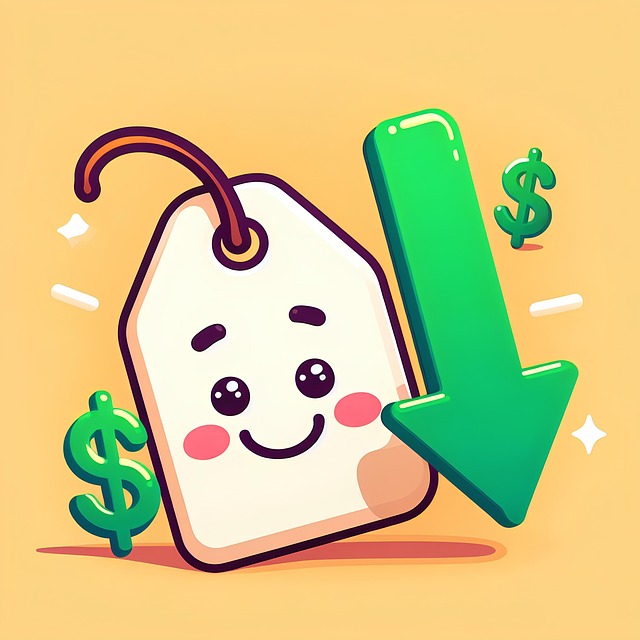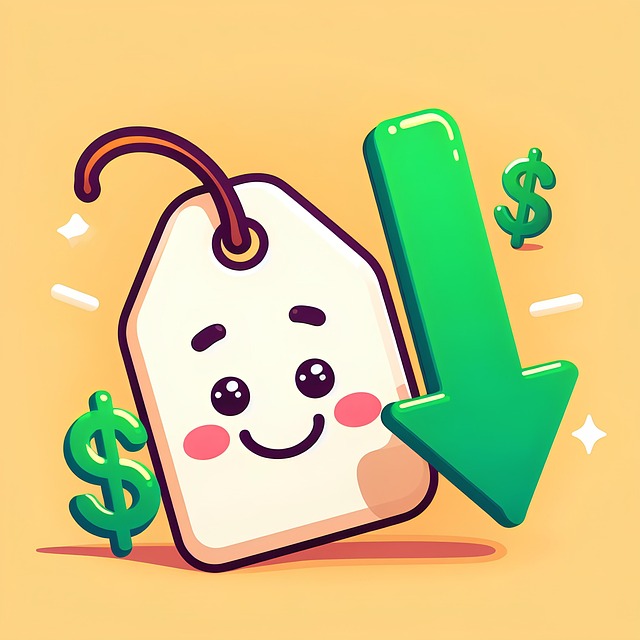In a competitive market, branding is vital for shaping consumer perceptions of product value. A strong brand creates emotional connections, justifying premium pricing through perceived quality, exclusivity, and performance. Strategic pricing and unique brand identities enable companies to command higher prices while maintaining competitiveness. Storytelling, building trust, and understanding the high-end consumer's preferences are key to successful premium pricing strategies, leveraging brand loyalty and mitigating legal risks.
Branding plays a pivotal role in setting premium prices, shaping consumer perceptions of value. A strong brand identity enhances perceived quality, justifies higher costs, and builds loyalty. This article explores key strategies, from crafting unique brand stories to building trust, for successful premium positioning. We delve into targeting the right audience, measuring branding’s impact through ROI, and understanding its role in driving sales at premium prices. Discover how effective branding can transform your product or service into a desirable, high-value offering.
- Understanding Branding Impact on Perception of Value
- Creating a Unique Brand Identity for Premium Positioning
- Storytelling and Its Role in Justifying Higher Prices
- Building Trust and Loyalty Through Consistent Branding
- Target Audience and Tailoring Messaging for Premium Market
- Measuring Success: Evaluating Return on Branding Investment
Understanding Branding Impact on Perception of Value

In today’s competitive market, branding plays a pivotal role in shaping consumer perceptions about product or service value. It goes beyond mere marketing; it’s the essence of what distinguishes one offering from another. A strong brand creates an emotional connection with its audience, which translates into a willingness to pay a premium price. When consumers recognize and trust a brand, they intuitively associate it with quality, exclusivity, and superior performance—all factors that influence their purchasing decisions.
This psychological aspect is crucial in understanding the relationship between branding and pricing strategies. Through effective product positioning through pricing, brands can convey their unique value proposition. A thorough price analysis helps businesses set prices that not only cover costs but also reflect the perceived value of their brand. For instance, bundled pricing advantages, when strategically implemented, can enhance the overall consumer experience while signaling high-end quality, thus justifying a higher price point.
Creating a Unique Brand Identity for Premium Positioning

Creating a distinct and unique brand identity is a powerful strategy to establish a premium position in the market. When it comes to setting higher prices, consumers often associate quality and exclusivity with well-crafted brands. A strong brand identity helps businesses differentiate themselves from competitors, allowing them to command a premium price for their products or services. This involves crafting a narrative around the brand, defining its core values, and creating visual elements that resonate with the target audience. For instance, luxury car manufacturers often utilise sleek design aesthetics, high-quality materials, and advanced technology to convey exclusivity and superior performance, justifying their higher pricing.
In the context of price elasticity, a unique brand identity can influence consumer behavior and willingness to pay. Understanding wholesale pricing dynamics and conducting a cost-volume-profit analysis is crucial for setting optimal prices that reflect the brand’s value proposition. For example, a boutique hotel with an iconic brand image might charge higher rates due to its reputation, exclusive amenities, and exceptional service, despite having similar offerings to nearby competitors. By giving us a call at [price-performance tradeoff in investments], businesses can navigate the delicate balance between premium positioning and maintaining market competitiveness, ensuring long-term success and profitability.
Storytelling and Its Role in Justifying Higher Prices

Storytelling has emerged as a powerful tool for brands to justify setting premium prices. By weaving compelling narratives around their products or services, companies can create an emotional connection with consumers, elevating their brand image and perceived value. This strategy leverages the human tendency to place a higher worth on experiences and stories that evoke specific emotions. When customers believe they are part of a unique journey or have accessed exclusive information, they’re more likely to accept and pay a higher price.
In essence, storytelling acts as a fixed cost investment for brands. It doesn’t directly impact the production or distribution of goods but significantly influences the price elasticity of demand. By understanding price theory fundamentals, brands can craft narratives that resonate with their target audience, ensuring customers perceive the value as commensurate with the price. Visit us at any time to witness how effective storytelling can transform a brand’s pricing strategy and shape the price sensitivity of customers.
Building Trust and Loyalty Through Consistent Branding

Building trust and loyalty is a cornerstone when setting premium prices. Consistent branding plays a vital role in fostering a positive relationship with consumers. When brands deliver on their promises and maintain a steady visual and messaging identity, customers develop an emotional connection that justifies higher prices. This trust translates into repeat purchases and word-of-mouth recommendations, creating a loyal customer base that understands and appreciates the brand’s value proposition.
Moreover, consistent branding helps insulate against price changes and consumer behavior shifts. Consumers who recognize and trust a brand are less likely to perceive price increases as predatory or unjustified. Similarly, discounts and promotions management become more strategic; rather than relying on deep discounts, a strong brand can charge premium prices by offering exclusive experiences or limited-edition products that command higher values. Understanding the break-even point calculation is essential for setting these prices effectively, ensuring profitability while maintaining the brand’s perceived value. For instance, find us at price elasticity examples demonstrate how successful branding can enable premium pricing strategies to thrive in competitive markets.
Target Audience and Tailoring Messaging for Premium Market

When tailoring messaging for a premium market, understanding the target audience is crucial. High-end consumers often seek exclusivity and value quality above all else. They are willing to pay a premium price for products or services that meet their unique needs and expectations. Marketers should focus on emphasizing the superior craftsmanship, luxury materials, and exclusive features that differentiate their brand in this space. A compelling narrative that resonates with the audience’s aspirations can significantly impact their purchasing decisions.
The pricing strategy should reflect the brand’s positioning and the perceived value it offers. In a premium market, where competition is often less direct and customers are more discerning, a strong brand image can justify higher prices. By leveraging the price-performance tradeoff in investments and showcasing how their offerings provide exceptional value, brands can attract and retain this exclusive customer base. Unlike engaging in price wars, which can have detrimental impacts, a well-communicated premium pricing strategy allows for a unique selling proposition that fosters brand loyalty and sets the product or service apart from its competitors. To learn more about setting retail prices anytime, visit us.
Measuring Success: Evaluating Return on Branding Investment

Measuring success is pivotal when evaluating the return on branding investment, especially when setting premium prices. It’s not merely about increasing sales; it’s about understanding the impact branding has on customer perception and behavior. The goal is to create a sense of exclusivity and value that justifies the higher price point. A robust branding strategy should translate into stronger brand loyalty, which in turn can lead to increased sales volume at premium prices.
Successful branding allows companies to differentiate themselves from competitors, influencing customers’ willingness to pay. Factors like brand recognition, perceived quality, and unique selling propositions all contribute to pricing power. By analyzing price elasticity of demand—how sensitive customers are to price changes—businesses can fine-tune their pricing strategies effectively. Even in cases of price discrimination legal aspects, a strong brand can mitigate potential risks by fostering customer trust and justifying tiered pricing models. Give us a call at bundle pricing advantages to discuss how branding can optimize your premium pricing strategy.
Branding plays a pivotal role in setting premium prices by shaping consumer perception of value. A strong brand identity, compelling storytelling, and consistent messaging not only attract the right audience but also build trust and loyalty. By understanding your target market and effectively communicating your brand’s unique value proposition, you can justify higher prices. Ultimately, successful branding strategies enable businesses to maximize their return on investment, ensuring that every aspect of their operation, from product quality to customer experience, aligns with the premium positioning.
